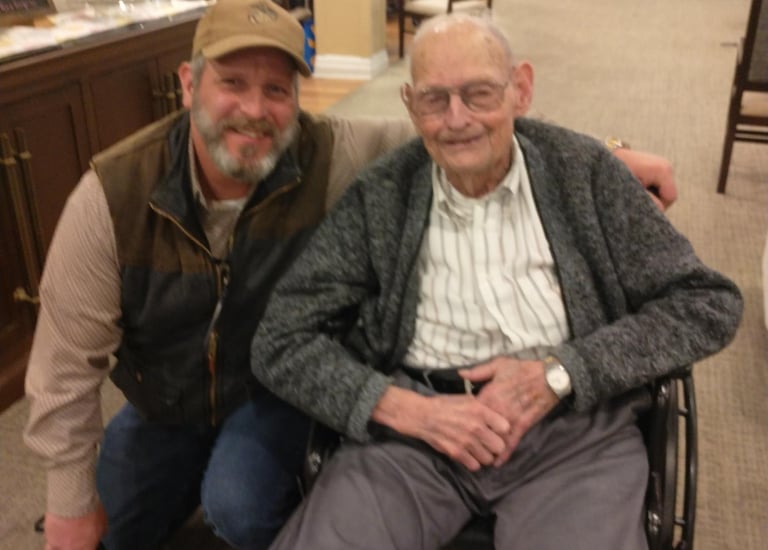Issues and Proposed Solutions


As a Republican candidate for Teller County Commissioner, Aaron will focus on many issues to include: wildfire mitigation, infrastructure efficiency, public safety, economic growth with affordable housing, and resistance to state overreach.
A disciplined, proven leader capable of addressing these issues with practical, conservative solutions. By prioritizing fiscal responsibility, community safety, and local autonomy.


Solutions: Expand Mitigation Programs: Advocate for increased funding for the NO FLO CO Wildfire Mitigation Posse and partnerships with local fire districts (e.g., Divide Fire Protection District). Use county-owned land for demonstration projects to encourage private landowners to clear defensible spaces.
Streamline Emergency Planning: Enhance evacuation route planning and communication systems, leveraging my military logistics experience as SNCOIC of 1st Bn, 10th Marines Combat Train to ensure efficient coordination during crises. Incentivize Private Action: Propose tax rebates or grants for homeowners who complete certified mitigation work.
Public Safety and Sheriff Support
Solutions: Increase Sheriff Funding: Advocate for budget reallocations to provide the Sheriff’s Office with advanced training, equipment, and staffing, particularly for rural patrols, without raising taxes.
Defend Constitutional Rights: Support resolutions affirming Teller County as a Second Amendment sanctuary, reinforcing local control against state gun control measures (e.g., 2024 ballot measures on gun control).
Wildfire Mitigation and Emergency Preparedness
Solutions: Strengthen County Resolutions: Propose resolutions asserting Teller County’s commitment to upholding constitutional protections, including First and Second Amendment rights, against state encroachment.
Coalition Building: Work with neighboring rural counties (e.g., El Paso, Park) to form a unified front against state overreach, as suggested by Erik Stone in 2019.
Resistance to State Overreach
• Infrastructure Efficiency: “Upgrade County Roads to improve safety and access for Divide residents; streamline permitting to support rural businesses without overregulation.”
• Public Safety: “Increase funding for Teller County Sheriff’s Office to enhance rural patrols and wildfire response training, ensuring community safety.”
• Economic Growth/Affordable Housing so your Children can afford to live in the county they grew up in. Find solutions for affordable homes for working families, while preserving our rural character.”
• Resistance to State Overreach: “Pass county resolutions to protect 2nd Amendment rights and property rights against state laws like SB25-003, ensuring local control.”
As a Teller County resident and retired U.S. Marine, I’ve dedicated years to serving our community. In 2021, I ran as a write-in candidate for the RE2 Board of Education to advocate for parental rights and educational excellence. For four years, I served on the RE2 District Accountability Committee, including two as co-chair, helping craft the district’s mission statement and charter to reflect our community’s values. I’ve also served two years on the High School Accountability Committee and continue to volunteer monthly cooking for the Teller County Veterans free breakfast. As GOP Precinct 12 Co-Chair, I’ve worked to uphold constitutional principles like limited government and individual liberty, fighting state overreach to protect our rural way of life. My campaign for District 2 Commissioner is built on Honor, Courage, and Commitment to deliver transparent, conservative leadership for Teller County.
The following plan integrates these enhanced proposals into a cohesive strategy, addressing public land management, wildfire mitigation, water rights, and rural economic development while leveraging COSWAP and aligning with Western values.
1. Teller County Resource and Resilience Council:
• Purpose: Coordinate land use, wildfire mitigation, water rights, and economic development with stakeholders (U.S. Forest Service, CSFS, WAP, local fire districts, ranchers, tourism operators).
• Actions:
• Convene quarterly to prioritize COSWAP and RMRI projects, targeting 500 acres of forest restoration and 1,000 household mitigation assessments by 2026.
• Advocate for local control in Pike National Forest management, resisting federal permitting delays.
• Secure $500,000 in COSWAP watershed grants for Catamount Reservoirs protection.
• Impact: Enhances local autonomy, protects property rights, and addresses voter priorities.
2. “Teller Safe and Strong” Campaign:
• Purpose: Promote COSWAP’s resident reimbursement program and tax incentives, building on the document’s tax rebate proposal.
• Actions:
• Host town halls with WAP to distribute COSWAP grant information and conduct assessments.
• Deploy CYCA and SWIFT crews for fuel breaks near Pikes Peak and Catamount Reservoirs.
• Create a public dashboard tracking COSWAP projects, enhancing transparency.
• Impact: Reduces wildfire risk, protects property values, and builds community trust.
3. Economic and Infrastructure Investment:
• Purpose: Strengthen tourism and agriculture through targeted funding and infrastructure improvements.
• Actions:
• Establish the Teller County Tourism and Agriculture Fund, using CSFS grants and local revenue for $2 million in projects by 2028.
• Offer tax relief for tourism businesses adopting wildfire-safe practices, supporting 100 businesses by 2027.
• Market Teller County as a wildfire-safe destination, leveraging COSWAP-funded mitigation.
• Impact: Drives economic growth, preserves rural identity, and enhances resilience.
4. Water and Land Advocacy:
• Purpose: Protect water rights and ensure local input in land management.
• Actions:
• Represent Teller County on the Colorado River Basin Roundtable to safeguard water allocations.
• Secure COSWAP and FRWRM funds for watershed and forest health projects.
• Advocate for state legislation reducing regulatory burdens on rural land and water use.
• Impact: Defends property rights and ensures rural access to critical resources.
Relevant Facts and Features
• Wildfire Risk: Teller County’s WUI status and 2024 $1 million COSWAP grant underscore the urgency of mitigation. COSWAP’s 2025 investments ($8.4 million for Landscape Resilience, $13.8 million for Workforce Development) support scalable solutions.
• Land Use: Pike National Forest dominates Teller County’s landscape, with 36% of Colorado’s land federally managed. RMRI’s 1,500 acres restored since 2020 show the potential for collaborative management.
• Water Challenges: Catamount Reservoirs face sedimentation risks, addressed by COSWAP’s $2 million 2025 watershed funding.
• Economic Context: Tourism generates $100 million annually, while agriculture supports rural livelihoods. Infrastructure and wildfire safety are critical for both.
• Western Values: Local control, property rights, and self-reliance are central to Teller County’s identity, aligning with Helstrom’s Constitutional Conservative platform.
Definitions:
- COSWAP: Colorado Strategic Wildfire Action Program - A program created by the Colorado legislature in 2021 (SB21-258) to support wildfire risk reduction through workforce development grants and landscape resilience investments, focusing on protecting life, property, and infrastructure.[](https://dnr.colorado.gov/divisions/forestry/co-strategic-wildfire-action-program)[](https://dnr.colorado.gov/press-release/dept-of-natural-resources-announces-colorado-strategic-wildfire-action-program)[](https://fireadaptedco.org/network/colorado-department-of-natural-resources/)
- CSFS: Colorado State Forest Service - A state agency under Colorado State University that promotes forest health, wildfire mitigation, and restoration through programs like the Forest Restoration & Wildfire Risk Mitigation Grant Program.[](https://dnr.colorado.gov/press-release/dept-of-natural-resources-announces-colorado-strategic-wildfire-action-program)[](https://csfs.colostate.edu/grants/forest-restoration-wildfire-risk-mitigation/)
- WAP: Wildfire Action Plan or Watershed Action Plan - In the context of Colorado’s wildfire mitigation, it often refers to plans developed to assess and mitigate wildfire risks to communities and watersheds, such as those supported by COSWAP’s Landscape Resilience Investments. The exact meaning can vary, but this is the most relevant based on context.[](https://dnr.colorado.gov/Gov-Polis-DNR-COSWAP-Invests-8-4-million-wildfire-mitigation)
- RMRI: Rocky Mountain Restoration Initiative - A collaborative effort focused on restoring forest health and reducing wildfire risk in specific focal areas across Colorado, often referenced in COSWAP’s strategic focus areas.[](https://dnr.colorado.gov/divisions/forestry/co-strategic-wildfire-action-program)[](https://dnr.colorado.gov/press-release/dept-of-natural-resources-announces-colorado-strategic-wildfire-action-program)
- CYCA: Colorado Youth Corps Association - A statewide organization that partners with COSWAP to deploy accredited conservation corps crews for wildfire mitigation projects, emphasizing workforce development and career training for youth and veterans.[](https://dnr.colorado.gov/divisions/forestry/co-strategic-wildfire-action-program)[](https://dnr.colorado.gov/co-releases-latest-round-of-coswap-workforce-development-grants)[](https://dnr.colorado.gov/press-release/dept-of-natural-resources-announces-colorado-strategic-wildfire-action-program)
- SWIFT: State Wildland Inmate Fire Teams - A program within the Colorado Department of Corrections that deploys incarcerated individuals to perform wildfire mitigation and forestry work, offering skills training and community reintegration opportunities.[](https://dnr.colorado.gov/divisions/forestry/co-strategic-wildfire-action-program)[](https://dnr.colorado.gov/co-releases-latest-round-of-coswap-workforce-development-grants)[](https://dnr.colorado.gov/press-release/dept-of-natural-resources-announces-colorado-strategic-wildfire-action-program)
- WUI: Wildland-Urban Interface - The area where human development meets or intermingles with wildland vegetation, posing high wildfire risk to communities. It’s a key focus for COSWAP and CSFS mitigation efforts.[](https://fireadaptedco.org/network/colorado-department-of-natural-resources/)[](https://csfs.colostate.edu/grants/forest-restoration-wildfire-risk-mitigation/)[](https://csfs.colostate.edu/wildfire-mitigation/colorados-wildland-urban-interface/)
Comprehensive Plan for Teller County


God Bless the U.S.A.
(719) 286-0204
© 2025. All rights reserved.
Paid for by Helstrom for Teller 2
Aaron Helstrom Candidate for Teller County Commissioner